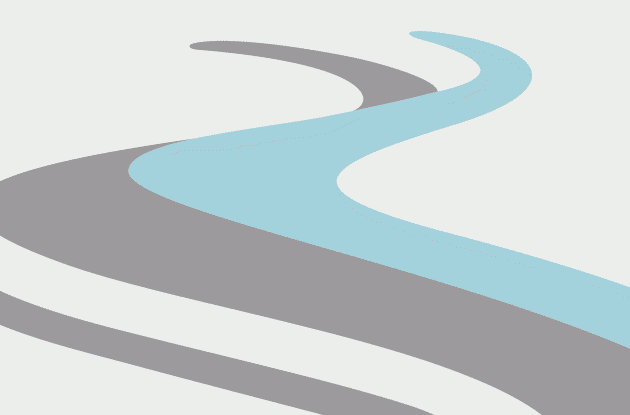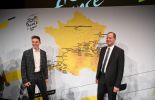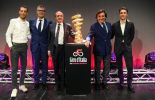Product Review: Inside the Postal Bus
Ian Melvin reviews Michael Barry's popular book "Inside the Postal Bus" bringing you all the action taking place inside the US Postal/Discovery team bus.
Ten years ago, the concept of a team travelling in a luxury coach would have been ridiculed but today it is common practice amongst the top teams within the sport. It is a place for riders to prepare for a race, to enjoy a coffee during the final team meeting, a place of celebration and a place to shower off the days disappointments after a 5hr slog over cobbles and up mountains.
At any race across
As a support rider for the US postal/Discovery Channel team for four seasons, Canadian Michael Barry is in as good a position as just about any rider to spill the secrets about the more light-hearted moments within the team. Moments shared amongst a select few, often in the confines of hotels or team vehicles, away from the glare of the gossip-searching media, relaxed and often at their most natural.
For months now, Barry has posted a very amusing and often intriguing diary on velonews.com and when the powers that be at Velopress approached him to write a book based on his experiences, it seemed like too good an opportunity to pass up.
Armed with his new laptop, courtesy of team sponsor AMD, notes were taken from behind the smoked windshields; from the early season training camps, spring classics through the Tour, Olympics and Vuelta before the final end-of-season races, moments of joy and celebration and moments of sadness.
In the book excerpt below, Barry recalls when, in his first year with his new team, he was introduced to the world of the team bus:
The first time I saw the bus, I was both impressed and nervous. It was my first trip with the team in
?How do you like the 1980s strip club?? Christian asked.
The bus has a grey, blue, and red interior and exterior, is covered with logos on the outside, and lined with grey leather chairs with red trim on the inside. In the front there are 12 seats, two pair facing the front window and two sets of four facing each other with a table in between. The tables are rarely used for much other than a leg rest. Two long benches stretch toward the back of the bus, about 4 meters in length. After a race has ended and we?re driving to a hotel, every seat is filled by eight riders and a director.
Lance always takes the corner spot on the back bench, a spot where you can see everything going on in the rest of the bus and also a comfortable spot where you can put your legs up. When he?s not there, George takes that seat, and when George isn?t there nobody else really seems to care who has it.
For some reason the Spanish guys always seem to sit in the front of the bus, sprawled over the chairs, whereas all the other guys like the couches in the back. In the 2003 Vuelta, it became the joke that the front half of the bus was for the guys doing well, Triki and Roberto, and the rest of us were at the back of the bus where we had been all day on the climbs. None of the seats on the bus are used in a normal fashion. Most of the time legs are up in the air, guys are stretched out, and bags of clothing are scattered. Some packs become pillows while others become footrests.
Everybody gets ready at the same time and the bus becomes a zoo. Backpacks of race clothing are opened, with gear spilling out?numbers, jerseys, shorts?everything that we need for racing. Riders punch the buttons of the coffee machine while others push to get to the race food. Sugar, milk, creamer, condensed milk, and stir sticks all sit beside the automatic machine. Luc and the soigneurs take care of the coffee machine, while the rest of us abuse it and demand that it supply our needs with no complaints, and when it doesn?t, we call on them to remedy the situation.
Cakes of different kinds?apple tarts, rice tarts, jam tarts, and small rolls or paninis filled with Nutella or jam?sit in paper bags next to the coffee machine. We can choose between a huge variety of Clif Bars, cakes, and Clif Energy Gels?all sugary and all fuel for the day?s efforts.
Sometimes they?re hard to get down and other times they taste like the candy bars my allowance was saved for as a kid.
The cakes come from
Cereals are packed away in the shelves of the bus for the trips home from the races. Soy milk, for the lactose-intolerant, is in the fridge beside the sweetened condensed milk for the coffee.
Tucked away in one of the storage bins on the bus is an ultrasound machine. In the early season it seems the ultrasound machine is always out and riders are lining up to use it in the soigneurs? room. While one rider is on the massage table, another will be sitting on a bed using the ultrasound on his knee while another rider roots through the food bin looking for a cookie or piece of fruit. MTV, CNN, or Eurosport is usually on the television as background noise.
In the bus there are also bags of ice and ice packs, which we tuck under our tights or place over our knees, necks, or any other part that aches from the race. It?s not uncommon for us to be spread out across the body of the bus, nursing our aches in hopes of better muscles the next day.
The kitchen is beside the shower that is beside the bathroom. On the way to the races all of the doors separating the different compartments need to be closed, as the stench that comes out of the toilet is unbearable for the passengers. Most musicians have a ?no number two rule? on their tour buses for good reason, whereas we pretty much have a bus so we can take care of number two before a race. On a bumpy, sinuous mountain road, the stench is even worse as the corners seem to stir odors up from the depths of the bus. The soigneurs do their best to keep the bathroom and shower clean, but there are odors they can?t remedy, even with all the air fresheners and antibacterial sprays available.
Cyclists are generally not clean and neat right before or after a race.
The bus is a sty after everybody has scurried and pushed about in an effort to get ready. After the race all anybody cares about is consuming calories and putting their feet up. When we arrive at the hotel for the evening, from the front to the back of the bus there are wrappers and open empty cans and bottles rolling around on the carpeted floor. It was really nice to have Berry Floor as a sponsor?they would replace the carpeting when it became nasty with stains.
During the few years I spent racing with the U.S.based Saturn cycling team, we had no bus or camper, so we often had an issue finding toilets prior to the races. In
The team buses, like the mechanics? trucks, often get shuffled around between teams. When a team folds, another team will buy its bus or truck, or when a team upgrades their truck, a team with a smaller budget might buy the old truck. All the vehicles end up getting worked over during the season. They are cleaned and well cared for but they do rack up at least a few trips around
Besides the often amusing anecdotes and stories recalled by Barry, there are a number of short pieces written by George Hincapie, former US Postal team-mate Christian Vandevelde and, Barry?s wife, Dede Demet Barry, who raced to a well-deserved silver medal in the women?s time trial at last
year?s Olympic Games.
One thing many readers will love about this book is the easy bite-size chunks in which it has been written. Whether Barry is relaying stories from the pre-season training camps, at home in Girona, time back racing in the USA or the rigours of the Vuelta a Espana, his fluid and easy to digest style of writing make this book a pleasure to read at any time of the day.
?Inside the Postal Bus: My ride with Lance Armstrong and the US Postal Cycling Team? proves to be a great read with interesting stories for even the most knowledgeable of fans. The day-to-day lives of the elite riders on one of the worlds greatest cycling teams is brought directly to you through the eyes of one of their most consistent performers. With the retirement of Lance, this book might just be one of your final opportunities to catch a final glimpse into the successful world that he and his teammates shared for so long.








